











































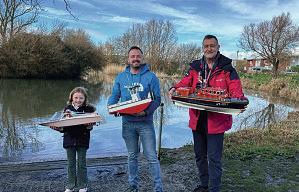


WIN apre-production factorysampleof BillingBoats’newly updated&soonto berelaunched 1:60kit! THEMIGHTY MINTANIC Sometoptipsforgettingmore outofaverybasiclittlehullbuild
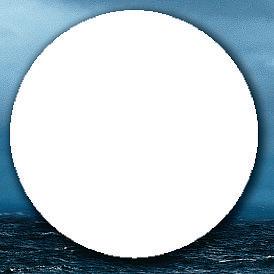

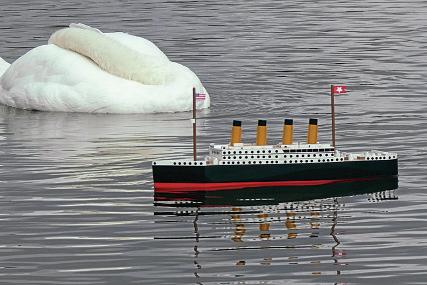
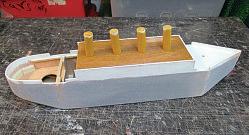



















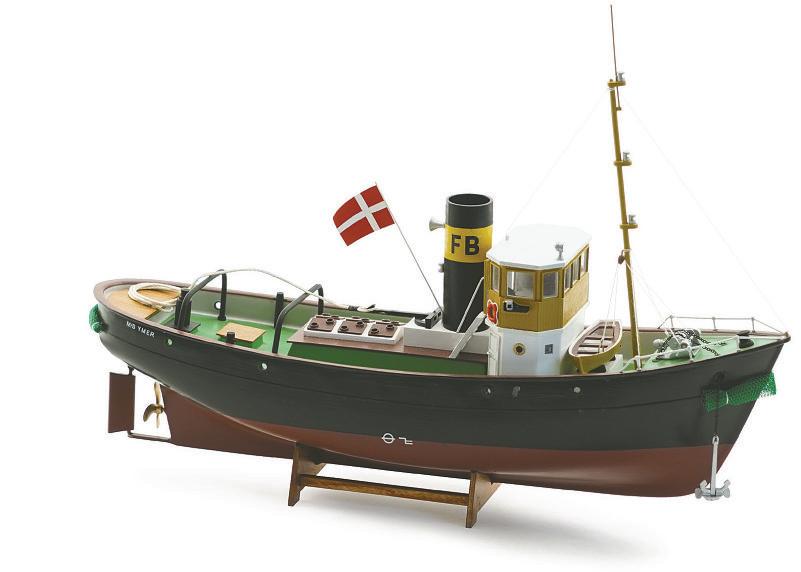




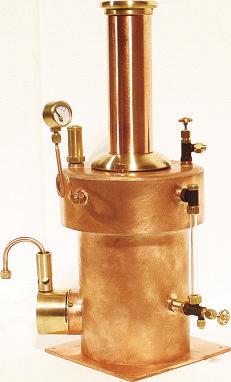





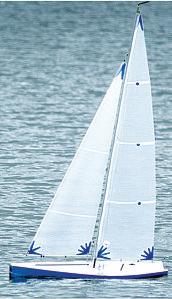















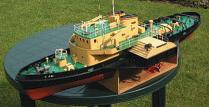

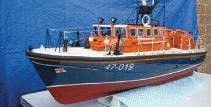





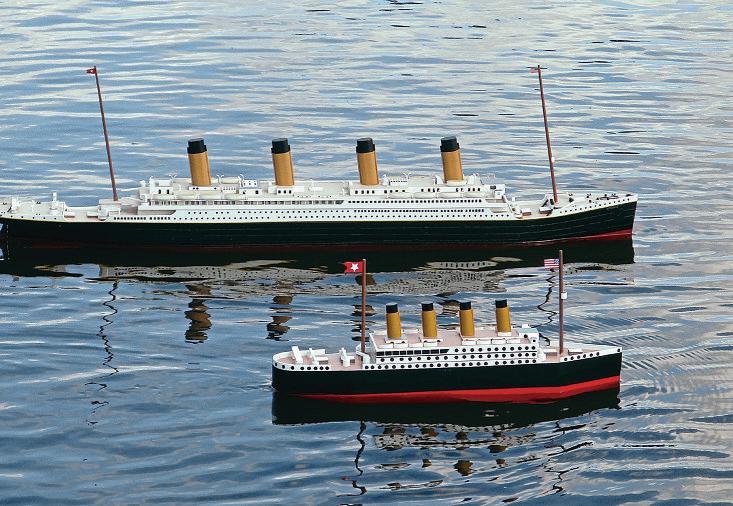
30 Save money wit h a subscript ion!
C h e c k o u t t h e l a t e s t p r i n t a n d d i g i t a l d e a l s a n d g e t y o u r f a v o u r i t e m a g a z i n e f o r l e s s
32 A bit of Ar g y- Bar g y!
W he n i t lo ok s like yo u ’ re a b o u t to g et in a s p ot of b ot he r, an al te r nati ve to hav ing to w ad e in i s al w ay s ve r y welcom e, p oint s o u t John Par ke r
36 Exclusive Prize Dr aw
Yo ur c hanc e to net a f ac tor y te s t t r ial k i t for t he new l y im prove d, u p d ate d and s o on to b e relea s e d Billing Boat s ’


y ba sic li t tle hull
24 Anjibee
A c la s sic c r ui s e r b eau ti f ull y re b uil t by Phil Bu t ton
1:6 0 s c ale Nor t h Sea t r aw le r Prog re s s
38 Fr ee Pilot Boat
Pull - Out Plan
PLUS a com pre he n si ve g uid e to i t s b uild by d e sig ne r Gl y nn Gue s t
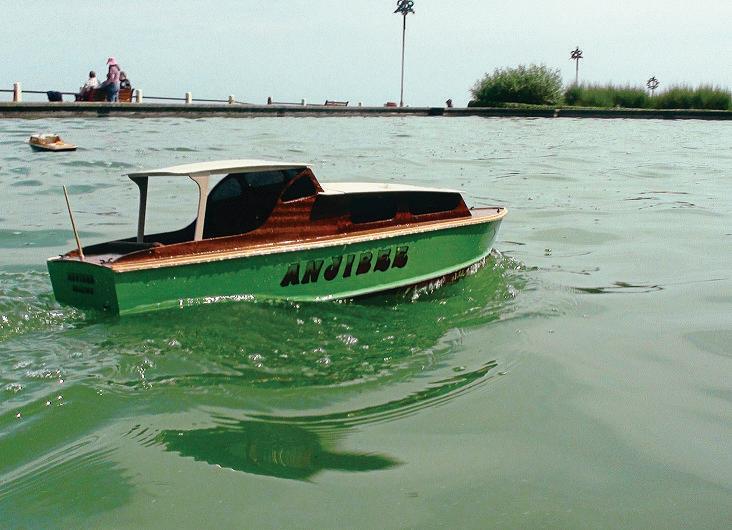
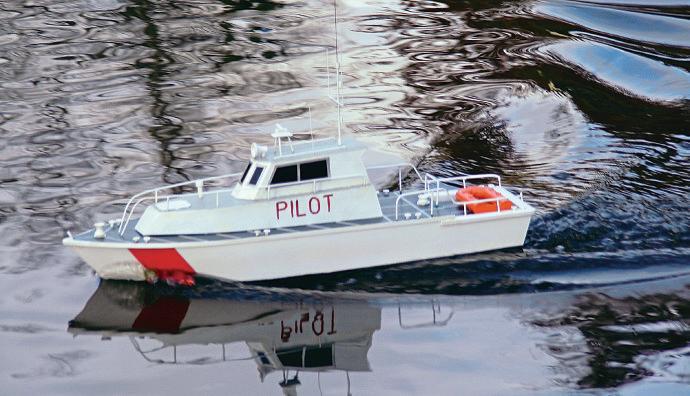

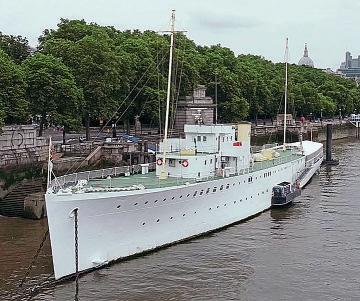

T50 The t hrus t of t he mat ter
Gl y nn Gue s t ex plain s t he p hy sic s b e hind t hr u s t line s and how to p u t t he or y into pr ac tic e
54 A Kr af t f or t he boat man
Dave W ig g in s p u t s s om e g r af t into K r af t
58 Boiler Room
Ric hard Sim p s on cond e n s e s d ow n all yo u ne e d to k now w he n s ho p ping for a com pre s s or b e s t sui te d to yo ur re q uire m e nt s
62 Your Models
More of yo ur mag nific e nt wor k s howc a s e d



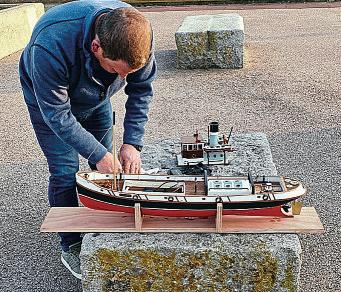
69 Your Let ter s V iew s aire d and info s hare d
74 Next mont h…
Ju s t t hre e of t he rea s on s yo u won’t w ant to mi s s t he June 2 024 i s sue of Mo d el Boat s
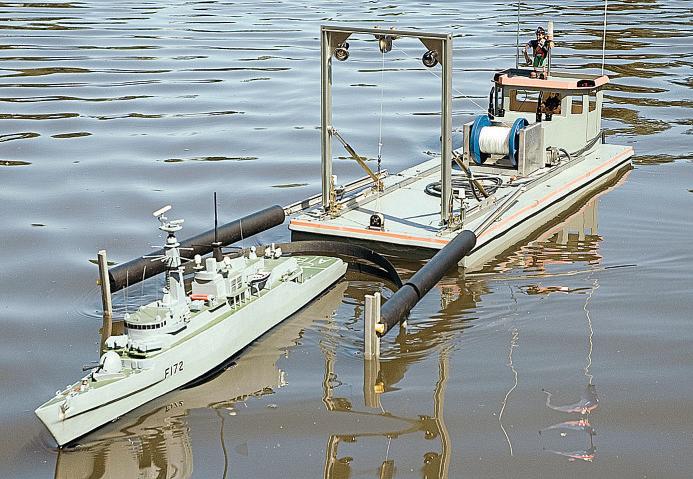
his month we’re not only bringing you a free Pilot Boat pull- out plan and ver y comprehensive build guide (see pages 38- 49) but also an exciting and exclusive prize draw cour tesy of Billing Boat s (see pages 36 -37) and a ver y prestigious display oppor tunit y invit ation from the Welling ton Trust (see pages 12-14) That, of course, is on top of (par ticularly when it comes to Ashley Needham’s Mintanic feature – see pages 16 -23) some interesting future projec t ideas and ar ticles aimed at helping you arrive at the right decision/s by put ting explained theor y into prac tice (see The thrust of the mat ter on pages 50 -52 and the latest inst alment of Boiler Room on pages 58- 61)
While we’re on the subjec t of ‘get ting things right ’ , I must just quickly apologise for the subhead blunder on page 51 of the final inst alment in Glynn Guest ’s USS Keats Sound series last month I have no idea how I mis sed such a howling t ypo, especially one printed in screaming pink – sorr y, Glynn! There are probably numerous gags that could be made about this innocent oversight, but all of them best steered well clear of in a family magazine
And that ’s ver y much what Model Boat s is in some households, as evidenced by the opening stor y (see pages 62- 63) of the Your Models sec tion this month
Check out Malcolm, Tom and Isla, three generations of the same family, all enjoying the hobby together – brilliant! That ’s just for st ar ters though, as there’s lot s of other modellers’ incredible work showc ased too. There’s also plent y of thought-provoking correspondence to dip into on the Let ters pages, including some queries and appeals you may be able to help out with Never underestimate the value of your input and feedback, it ’s always really appreciated, so please keep those let ters and emails coming
Lined up for the nex t is sue (cover dated June and on sale from Friday, May 19, with subscriber copies being delivered up to a week earlier) is an easy-build river ferr y model mini plan and accompanying instruc tions, so don’t mis s it
Lindsey




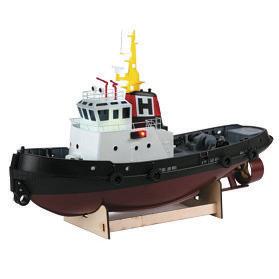


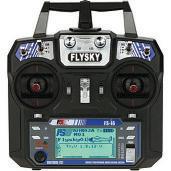


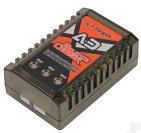


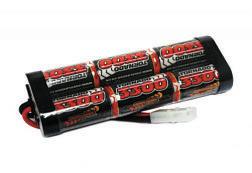


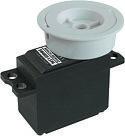






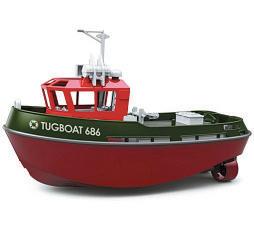




















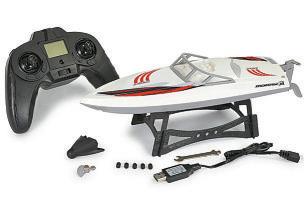




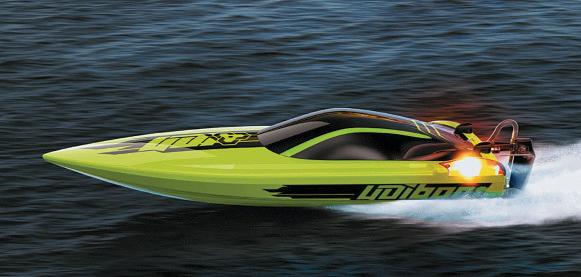
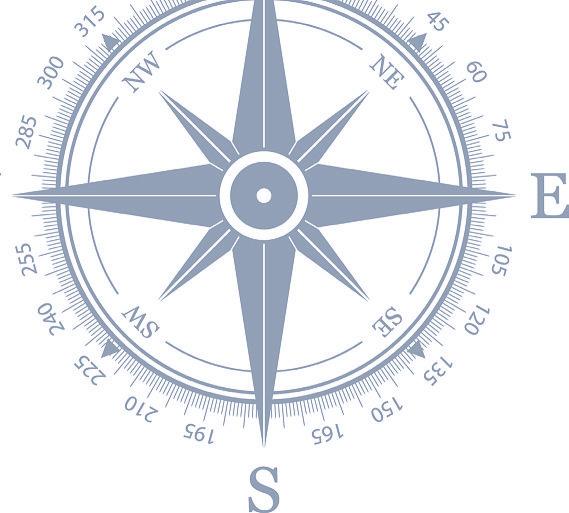
If you have a news story for these pages, please contact the Editor, Lindsey Amrani, via e-mail at editor@modelboats.co.uk
Currently in production by Billing Boats are three improved and updated 1:60 scale entry level kits from the 1970s: the outrigger trawler Carli, No. 236; the North Sea trawler Progress, No. 240 (a pre-production sample of this kit being up for grabs in this month’s exciting and exclusive prize draw – see pages 36-37); and the tugboat Ymer, No. 244. All three kits will include newly designed and easy to follow photo manuals.
Work on photo manuals for some of the other older kits in the range, including the US Coast Guard boat (No. 100), the Royal Navy lifeboat Waveny (No. 101), the fishing boat Dana (No. 200), and the shrimp cutter Rainbow (No. 201), is also now in progress
Double -whammy event at Wilton Park!
Sunday, May 12 will see the Kirklees Model Boat Club host its annual Steam Day alongside Mountfleet Models’ Open Day at Wilton Park, Bradford Road, Birstall, Batley WF17 8JH
Although the main focus of the day will be on steampowered models, from 9am to 4pm visitors will be most welcome to sail their own models of all types (with the exception of IC and high-performance fast electrics) alongside those belonging to Kirklees MBC members. There will also, of course, be many impressive Mountfleet Models kit builds on display, both in and out of the water While on land, the military section of Kirklees MBC will be exhibiting a number and demonstrating their military vehicles.
Facilities will include free parking and the sale of onsite refreshments, while toilets can be accessed at the nearby café in the park.
Steam tests will also be carried out on the day, but please note that anyone wishing to have their steam plant tested will need to contact the Events Planner, Stan Reffin, at least two weeks before the event on 0113 267 5790.
Stan will also be happy to assist with any further queries you may have about this event
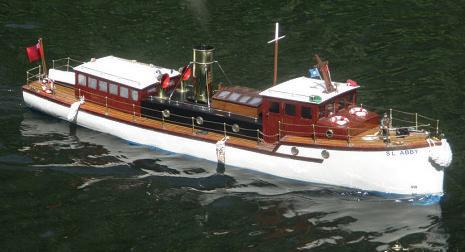

Work on improving and updating these entry level kits for the outrigger trawler Carli (left), the North Sea trawler Progress (centre) and tugboat Ymer (right) in Billing Boats range is currently underway

The weekend of May 18/19 will see a special RNLI 200 Poole Lifeboat festival, commencing at 11am on the Saturday and finishing at 4pm on the Sunday, held at the RNLI College, in Poole, Dorset. The festival will feature an open-house event at the Support Centre site, with examples of the current fleet on display, recovery demonstrations, interactive workshops in the College, demonstrations in the Sea Survival Centre, and a RNLI Showcase Hub at the rear of the ALC featuring a stage with Q&As, talks, live music, children’s entertainment, trade stands, food and drink.
The Quayside in Poole will host the History of Maritime Search and Rescue Boat Show, with an array of historic and international lifeboats moored at the Marina.
A road closure will be in place for part of the Quay, and you will be able to access the marina pontoons to see the lifeboats and talk to crews. Static lifeboats and lifeboat enthusiasts’ models will be on display too, plus there will be a pop-up RNLI shop, heritage stands, live music and street entertainers. Poole Lifeboat Station and the Old Lifeboat Museum will also be open for the weekend.
On Sunday afternoon there will be a Parade of Sail to close the event This will feature the current RNLI fleet, historic lifeboats and international lifeboats sailing down the Main Channel and then up the North Channel.
Entry to the Poole Lifeboat Festival will be free of charge, although some of the special events will be ticketed.
This popular museum, located at 5 Odun Rd, Appledore, Bideford EX39 1PT, has now reopened for the forthcoming holiday season. Admission, from 10.30am to 5pm (last entry 4pm) seven days a week, right up until October 31 (when the museum will once again close for the winter months) is charged at £5 for adults and £3 for children/ senior citizens, while a family ticket (two adults plus two children) can be purchased for £15
Displays, which incorporate a wide range of model ships and boats, are dedicated to telling the story of the local ship building industry – with an all-new exhibition for this year being the ‘Last gasp of Sail’. For more details visit https:// northdevonmaritimemuseum.co.uk or call 01237 422064.
The National Historic Ships UK’s Small Grants Scheme has awarded The Golden Hinde – a full-scale reconstruction of the ship sailed by Sir Francis Drake during his circumnavigation of the globe in the 16th century, moored on London’s Bankside – a £700 grant that will be put towards the replacement of its mizzen mast.
The mizzen mast is one of three masts on the Golden Hinde and is integral in the ship looks visually and historically accurate.
Commenting on this Roddy Coleman, Director of The Golden Hinde explains: “We are deeply grateful to National Historic Ships UK for their belief in our vision and commitment to The Golden Hinde’s reconstruction, ensuring that it can last long into the future and remain a cultural and historical asset for anyone interested in Tudor and or maritime history.”
The Small Grants Scheme is funded by the Department for Culture, Media and Sport, as well as from the National Historic Ships UK’s Historic Ships Insurance scheme with Winter & Co (Marine) Ltd, and this year awarded eleven grants (from more than 30 applications).
Updates on the Golden Hinde and the Mizzen Mast project can be found on the following social media platforms:
■ Facebook: https://www.facebook. com/GoldenHindeSE1/
■ Twitter https://twitter.com/ GoldenHinde_
■ Instagram https://www.instagram com/goldenhinde_/
The penultimate volume in a four-book series penned by Grant Walker and devoted to the Rogers Collection of Dockyard Models at the US Naval Academy is now in its final production stages.
The collection came into the Academy’s possession in 1938 as part of a bequest from Colonel Henry Huddleston Rogers, and Volumes I and II cover the 17 fine scale models which represent ships of the line (i.e., those that were big and powerful enough to fight in the line of battle during fleet engagements) – these First, Second and Third Rates being closely examined by the author
Volume III will address the models of other Royal Navy ‘Age of Sail’ vessels in the collection: the cruisers and convoy escorts of the Fourth, Fifth and Sixth Rates. Whether by luck or design,
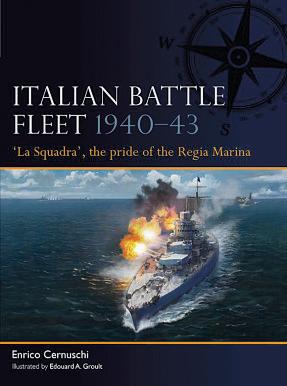

Rogers managed to find and purchase almost the same number of cruiser models (18) as he did miniature ships of the line. Eight of these represent Fourth Rates, six Fifth Rates and four Sixth Rates All originated in England and depict British warships.
Published by SeaWatch Books and priced at $90, pre-orders for Volume III can be placed online at https://www.seawatch.com


Penned by maritime historian Enrico Cernuschi comes this comprehensive account of the Italian Navy’s World II fleet, covering everything from the ships and technology to command structure, logistics, codebreaking, and more.
Illustrated with new artwork, maps, 3D diagrams and rare historic photos, the book, presented in paperback format, carries an RRP (Recommended Retail Price) of £15.99 and can be ordered from all good bookstores by quoting the ISBN 9781472860590. It can, however, currently be purchased at the discounted price of £14.39 when ordering online from www.ospreypublishing.com.
Drawing on 50 years of interviews with both staff and crew members who served on some of the world’s most famous liners from the 1950s through to the early 1980s, in this new book the author, William H. Miller, recounts stories and anecdotes from the wheelhouse, the galley, the engine room and just about everywhere else in between. Illustrated with over 200 photographs, most of which have never before been put into print, the title provides a unique window into a bygone age of ocean travel
Published by Fonthill Media Ltd, the book, which carries the ISBN 978-1-78155-897-3 and has an RRP of £35, can be currently be ordered online via https://fonthill.media at the discounted price of £24.50.



Rob White delivers an exciting invitation from the Wellington Trust

The Trustees are looking for the long-term loan of models that accord with The Trust’s intention for Wellington, with historic Thames-built ships being the central focus. For suggestion purposes only, some examples are listed below – although please note models of other vessels that expand on this theme will also be welcomed for consideration:
■ Great Harry (Woolwich Dockyard, launched 1514)
■ Vanguard (Woolwich Dockyard, launched 1586)
■ Red Dragon (Deptford, 1595)
■ Prince Royal (Phineas Pett, Woolwich Dockyard, launched 1610)
■ Mary Rose (Deptford, 1623)
■ Sovereign of the Seas (Peter Pett, Woolwich Dockyard, launched 1637)
■ Royal Oak (Deptford, 1674)
■ HMS Minotaur (William Rule, Woolwich, 1793)
■ HMS Royal Oak (Dudman’s Yard, Deptford, 1809)
■ HMS Nelson (J. Scott Russell & Co., Millwall, launched 1814)
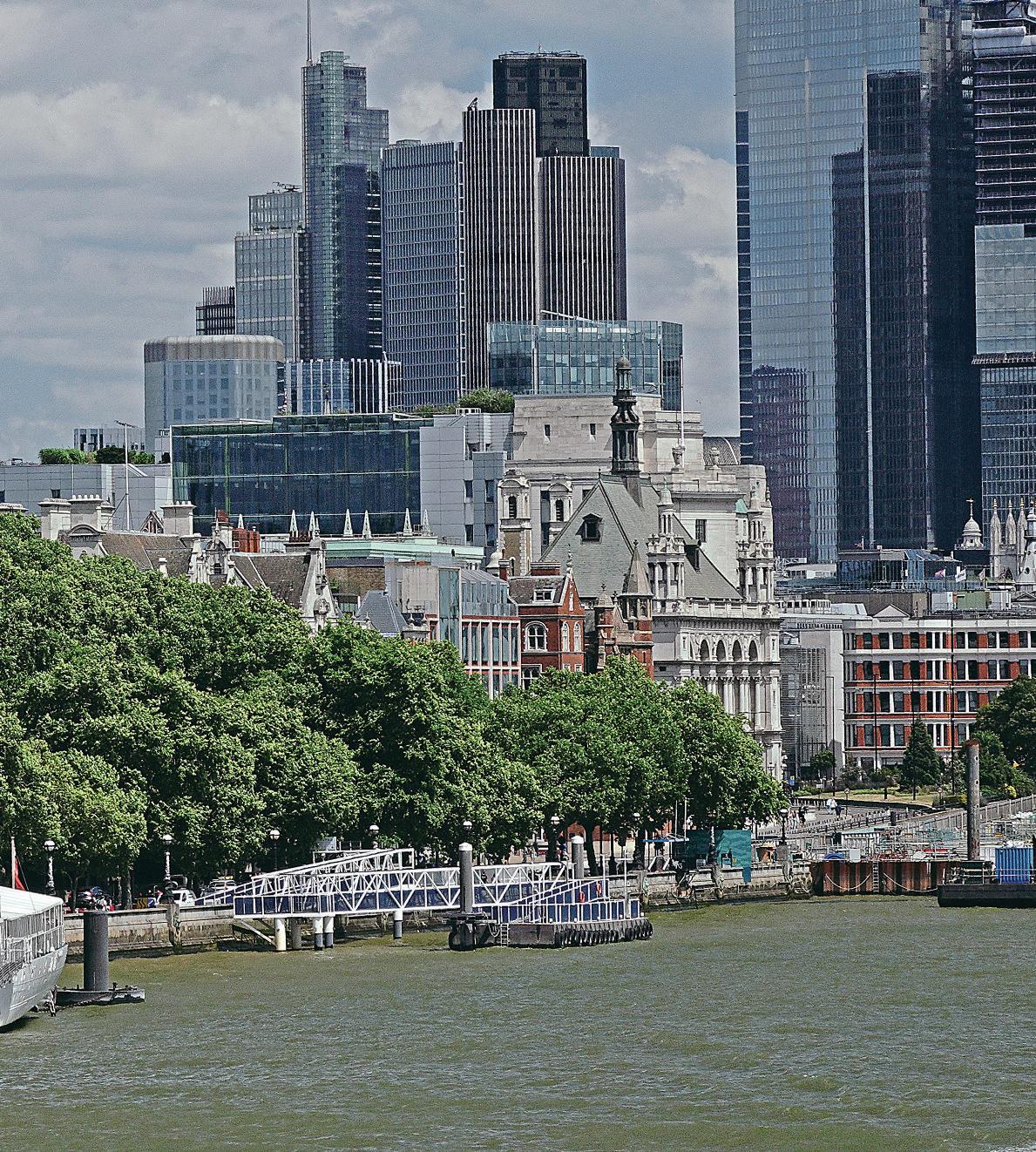
■ EIC (East India Company) Kent (Wigram & Green, Blackwall, launched 1820)
■ Madagascar (George & Henry Green, Blackwall, launched 1837)
■ PS Ripon (Money Wigram, Blackwall, launched 1846)
■ HMS Agamemnon (Woolwich Dockyard, launched 1852)
■ SS Great Eastern (J. Scott Russell & Co., Millwall, Launched 1853)
■ HMS Beagle (C.J. Mare & Co., Leamouth, London, launched 1857)
■ HMS Minotaur (Thames Ironworks and Shipbuilding Company, Blackwall, launched 1863)
■ HMS Valiant (Thames Ironworks and Shipbuilding Company, Blackwall, launched 1863)
■ HMS Warrior (Thames Ironworks and Shipbuilding Company, Blackwall, launched 1870)
■ HMS Albion (Thames Ironworks and Shipbuilding Company, Blackwall, launched 1898)
■ HMS Thunderer (Thames Ironworks and Shipbuilding Company, Blackwall, launched 1911)
Rest assured all models will be displayed under secure, temperature-controlled conditions, and credits and explanatory notes will, of course, feature alongside every exhibit.
Established in 2005, the Trust is dedicated to preserving HMS Wellington for future generations and commemorating all those served on her during a crucial period in our nation’s maritime history The launch of the new exhibition outlined in this feature will, along with a series of heritage lectures, special events and guided tours, form part of HMS Wellington’s 90th anniversary celebrations this year Educational programmes for schools, such as the popular Future Maritime Engineers’ course, will also continue to play an important role in the Charity’s strategy to acquaint young people with maritime life and the career prospects offered in both the wide-ranging UK Merchant Navy sector and the Royal Navy.
HMS Wellington, on her mooring at Temple Stairs on the Thames Embankment, as viewed from Waterloo Bridge.
Director-General of the National Museum
Berthed on the Thames in a central London location – at Temple Stairs, Victoria Embankment, immediately opposite Temple Underground Station – HMS Wellington could not be a more fitting home for such an exhibition.
Now the sole survivor of the Grimsby-class of ‘Imperial Sloops’, Wellington was built in 1934 to patrol the far-flung shores of the British Crown Colonies – eight million square miles of the South-West Pacific, including the Solomons and Samoa – running out of Auckland, New Zealand, between 1935 and 1939 Of the 13 ships of this class built, both in the UK and in Australia, four of them, including Wellington, saw service in the Royal Navy New Zealand Division, before the creation of the Royal New Zealand Navy in 1942
Wellington was subsequently recalled to the UK and left New Zealand in September 1939, hours before the UK declared war She rescued some 300 men of the trapped 51st Highland Division off a beach at St Valery, Normandy, days after the evacuation of the British Expeditionary Force at Dunkirk in 1940, and took part in Operation Torch, the invasion of North Africa, in 1942.
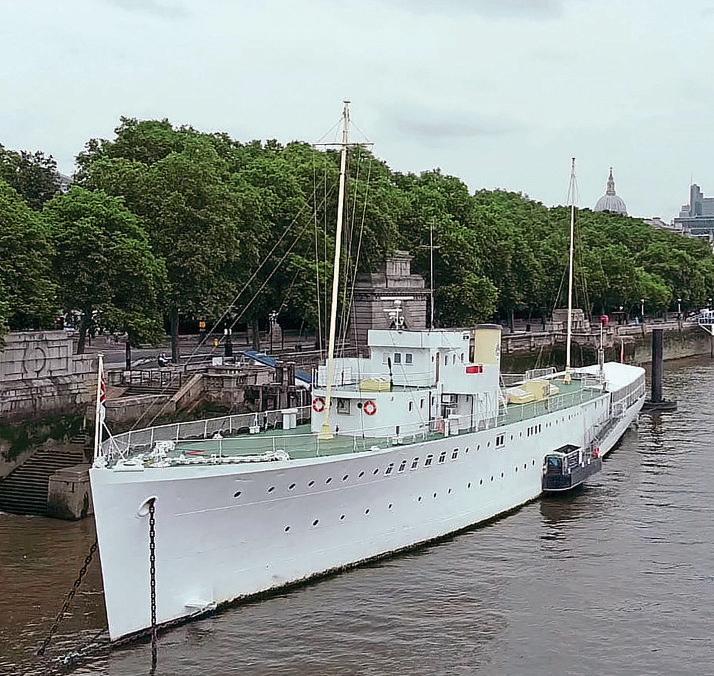
She was, however, to spend most of her war years on North Atlantic and West Africa convoy duties, running out of Devonport (NZ), Liverpool, Londonderry and Freetown (Sierra Leone). In this role she steamed close to 250,000 miles and rescued 169 survivors from a sunken passenger ship following a U-boat torpedo attack.
In 2004, HMS Wellington gained World Ship Trust status. She is entered as Number 502 on the National Historic Ships UK register
Former Director-General of the National Museum of the Royal Navy, Professor Dominic Tweddle, is a recently appointed Board member of the Wellington Trust. He is emphatic about the value of preserving Wellington as an important historic asset In his view “HMS Wellington has international, national and local significance. The international and national significance are clear The local significance arises from the fact that she’s the last survivor of the repurposed warships which once lined the

Thames. So, she’s an integral part of London’s history, too.”
In a direct appeal to readers of this magazine, Alastair Chapman, Chairman of The Wellington Trust, tells us: “We will be most grateful to any model makers kind enough to lend us their work for display onboard. With HMS Wellington’s rare history, this is a really fitting environment for the fine ship models we see in ‘Model Boats’. We know that our many visitors would find them admirable and interesting. We promise that we’ll take care of models loaned to us, and indeed welcome model makers on board to see their work. Their models will be integral to Wellington’s display and educational mission.”
If, therefore, you’d be interested in having one or more of your magnificent builds exhibited, please contact Jenny Moseley, Marketing Trustee and Deputy Chair of Friends of the Wellington: jmoseley@ thewellingtontrust.org ●


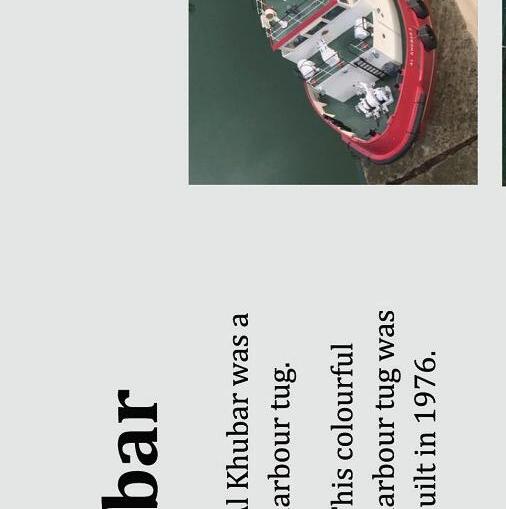
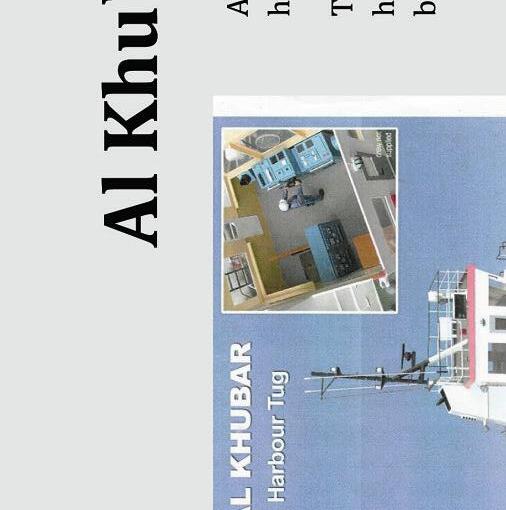







Warminster Model Boat Club member Mike Payne provides a beginner’s guide to ballasting
In this article, we’re going to be looking at ballast and where to put it, and the principles laid out here apply to all vessels, be they ARTR, kit or scratch built.
So, what is ballast? Well, if we are to believe Archimedes, in practical terms it is the difference between the necessary weight/mass of your model and the weight of the water it displaces when floating at its design waterline
Hopefully, you will have already looked up Archimedes’ findings on the web and know that if our model displaces 4kg of water it must itself weigh 4kg.
I define the model’s necessary weight as the weight of the hull, superstructure, motors, control gear, electric string, and (normally) electric storage (battery), in other words, all of those items fundamental to an R/C model.
If we find this weight for our example is 3kg then, obviously, we are going to need 1kg of ballast to get down to that critical waterline.
The experienced among you will, of course, know all this, but how many times have you seen the simple and entirely true statement “Just add ballast to get her to

float on the design waterline”? There is rarely any guidance, though, as to where that ballast might be put, other than “as low as possible.” This really is of little help to the novice, given that ballast links stability, endurance, performance, appearance and inertia, not forgetting displacement, which takes us back to where we started.
How, then, do you estimate a model boat’s displacement? Luckily, for our purposes, you don’t have to be very accurate (sorry, purists!) and the metric system is a great help. I found the following method in an article published aeons ago (sadly, I cannot recall the author’s name), and I know it works from practical experience.
You know the length (L) of the hull at the waterline in centimetres. You also know the width (W), again at the waterline, in centimetres. Thirdly, you know the depth
from the waterline to the keel (D) in centimetres. This gives you a box L x W x D in cubic centimetres.
OK, I know your hull shape is not a box, but try to imagine how much of this imaginary box your hull would occupy It gets better with practice but for the sake of this exercise say you estimate it will occupy about 65% of the box. The calculation, therefore, is L x W x D all times 0.65, which in this example fortuitously comes out at 4,000 cubic centimetres, or 4 litres. A litre of water weighs about one kilogramme, therefore the estimated displacement is 4kg.
Note that if your model is a super tanker, or some other mammoth, the space it occupies within the box may be 80%, therefore the calculated displacement becomes 4.9kg. Alternatively, it may be a sleek greyhound of the seas, with a slender hull shape, only filling, say, 50% of the box, and therefore displacing 3.1kg.
“How many times have you seen the simple and entirely true statement ‘Just add ballast to get her to float on the design waterline’? Tere is rarely any guidance, though, as to where that ballast might be put, other than ‘ as low as possible’”
“Now that we have linked ballast to displacement, what about stability, appearance, inertia, performance and endurance?”
This quick estimate might raise a red flag In the super tanker example, you are going to have to lift this model of nearly 5kg every time you launch and recover This may not be a problem here but if we were considering a much larger, therefore heavier, model – or if, like me, you are getting on a bit – it’s worth thinking about before you start the build
At the opposite end of the scale, the greyhound example reveals a more significant issue. If you recall from above, the model’s necessary weight was 3kg and your estimated displacement is only 3.1kg. Given the degree of approximation in your calculation, that’s a bit close for comfort. You may need to consider lighter batteries, for example.
Now that we have linked ballast to displacement, what about stability, appearance, inertia, performance and endurance?
There was an excellent article by Glynn Guest in the September 1984 issue of Model Boats explaining the theoretical aspects of model ship manoeuvrability (possibly available from archive) which I will try to precis.
A boat will rotate in pitch and roll about some point amidships. Clearly, much of your weight needs to be below this point so that the vessel tries to remain upright in roll, hence the mantra “as low as possible.” The weight should also be distributed fore and aft of that point so that the hull is level in pitch.
Calculating the position of this magic point is possible but the most practical estimate is to look for that part of the hull which will carry most weight, that is, where it is largest or fattest below the waterline. This will be an initial guide.
Once the basic hull is built and waterproof put it into water and push it downward to the waterline with a single finger Move the finger along the hull centreline until you can push and the hull stays level (in pitch). Now you know approximately where the point is. Mark it somehow on the inside of the hull. This is the Centre of Gravity (CG).
If you can, use loose weights to float the hull down to its correct waterline and, very gently, again with a single finger, push the hull sideways. Move your finger along the hull until, when you push, the hull moves sideways without trying to turn at bow or stern. Mark this point also inside the hull. You will have found the centre of lateral area (CLA).
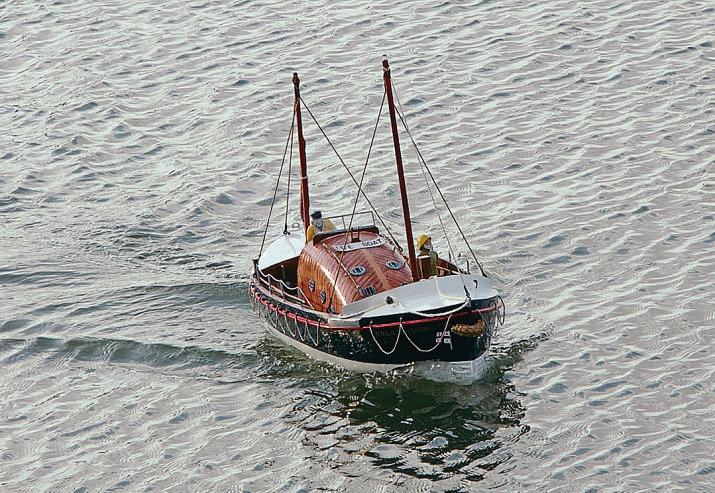
So, where to put this 1kg of ballast we calculate we need for our model? Low down of course, but concentrated about the CG or distributed along the length? It depends really on what we intend to use the model for The more the CLA is astern of the CG, the more reluctant the hull will be to turn away from a constant course.
If you want a highly manoeuvrable boat and have a choice, choose a hull where the CG and CLA are close together and keep the ballast concentrated about the CG. The model will be easy to turn but will demand your full attention while sailing.
Alternatively, if you enjoy a relaxed cruise, ideally chose a hull where the CG and CLA are separated and distribute the ballast along the length of the hull This will increase inertia, which will resist change.
In my opinion there is an additional advantage in distribution. A real vessel does not bob about like a cork giving its crew a rough ride; its vertical movement through the water is gradual Warships, for example, are designed to plough through the water, not rise with it, so that they remain as stable a gun platform as possible.
In other words, a model with its total weight distributed along the hull will look/ perform more like the real thing when it is out on the lake.
Most of us live some distance from our regular sailing water, therefore it’s worth considering maximising the sailing time you can extract from any given model
The amount of power you need to drive your model much faster than its scale speed is considerable and in my view wastes battery power better used to stay longer on the water Try, therefore, to install as much battery capacity as you can within the overall displacement allowance and only use ballast to fine tune the model’s overall presentation.
Well, I try to! I have illustrated a couple of builds I’ve ballasted here by way of example.
Photo 1 shows HMS Cossack, which I built from a Vic Smeed design but re-scaled to 1:96. Ballast was distributed inside along the keel, with particular attention to the bow and stern. She tends to ride very flat in pitch, even in quite choppy waters. A small amount was placed by experiment port and starboard just under the main deck amidships so that in a hard turn she rolls outward just like a fullsize destroyer Getting this feature to work reliably was not good for my nerves, but it impresses/alarms onlookers!
In hindsight, I think less weight but high within the masts perhaps might have been a better solution.
Photo 2 shows the RNLB Lucy Lavers, a Liverpool class single screw lifeboat. This is another modified Vic Smeed design, this time built to 1:12 scale – a model with a short, fat hull with room for ballast on the keel fore and aft but also low and wide amidships. Comments have been passed as to how steadily she behaves in chop.
If you understand the principles and are prepared to experiment a bit, I believe the chances of success are very good indeed. ●
“A model with its total weight distributed along the hull will look/ perform more like the real thing when it is out on the lake”



The ever-innovative Ashley Needham shares some top tips for getting more out of the build of a fairly basic little hull

Like many other boaters, for more than a few months during the Corona Virus pandemic I sat at home, and so, with no prospect of going boating for the foreseeable future, my efforts turned to finishing a couple of craft that were on the stocks. The trouble was, having plenty of time on my hands, these projects were soon finished, and I was once more left twiddling my fingers. Further to this, when our local pond did become accessible again after a period of park closure, cars were no longer permitted onsite, access being restricted to foot traffic and bicycles. Now, as it happens, I did have a few boats that were transportable by bike, but that always presents the risk of damage. So, what was needed, I decided, was something a bit more robust and not exceeding 24 inches (600mm) in length, as this would allow it to fit comfortably into my nice solid tool bag, which also has a strap on it so you can carry it over your shoulder while cycling.
I am afraid inspiration here came from a children’s seaside plastic boat, something I bought years ago as it was a nice big size (500mm by 100mm) and I had a thought at the time that just possibly I could put a motor in it. It was flat bottomed with little wheels inset underneath and in a bright blue plastic, with a flat ‘V’ form bow and a white superstructure with one funnel. Top marks to the manufacturer though, as someone had a
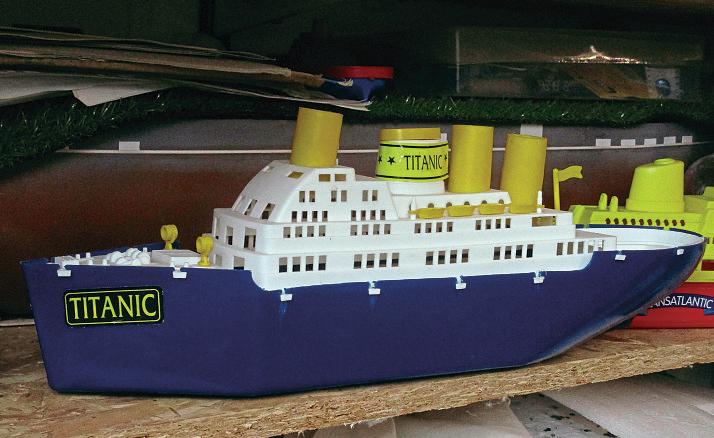
“ While staring at this toy on the shelf, it occurred to me that if I gave the hull a black paint job and replaced the original funnel with a tubular one, it could just…”
very cunning idea. They would cut three holes in the top, add three yellow tubular funnels (at odds with the existing streamlined funnel!) and then – the masterstroke – put some big Titanic stickers on it! Yes, you may well laugh. As conversions go, it was a bit, er, crude. No doubt the seaside kiddies and their parents let such niceties pass them by – the thing is, though, while staring at this toy on the shelf,
it occurred to me that if I gave the hull a black paint job and replaced the original funnel with a tubular one, it could just…
In all my builds, I try to capture the ‘look’ of a vessel. Get the identifying features and proportions right, job done! Obviously, I was working to a size constraint here, but
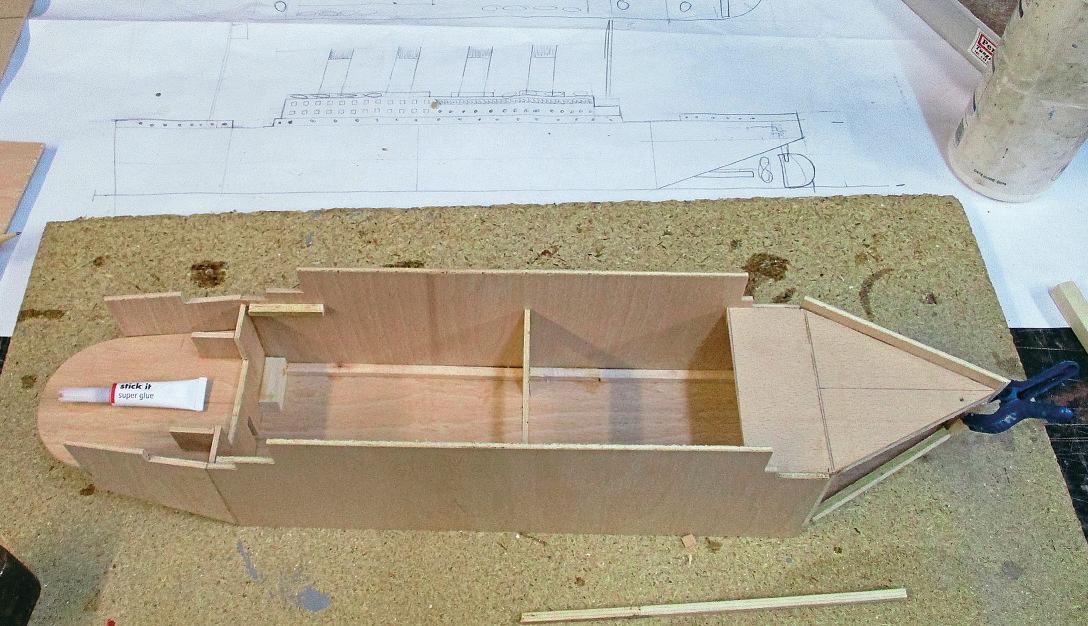

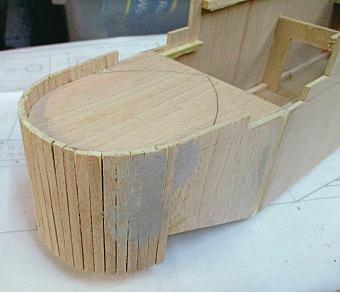
I saw no reason why this build couldn’t, on completion, bear enough of a passing resemblance to an actual vessel (more on this later) to make it instantly recognisable. As my inspiration was the seaside boat, it followed that I would have to build a Titanic I have a decent 1200mm long semi-scale Titanic already, so this one would be the MiniTitanic, or Mintanic!
The easiest way to realise the dream was to simply copy the plastic hull shape Designing something of the right length but trying to get a better shape would, I felt, be getting away from the inspiration for the build Likewise, altering the proportions too much might ruin the good looks (to taste, mine obviously!) of the original plastic version Also, as Mintanic would not be to scale, I didn’t see any point trying to make it something it’s not Besides which, making the bows with flat pieces of ply would be really easy!
I broke out the SPAR (Sharp Pencil And Ruler) design package and a sketch was made to ensure the various mechanical components had sufficient room and could sit in the right place. An important design feature, considering the boat would be transported to and from the pond in a bag, was that the propeller and rudder would not protrude below the level of the flat bottom. Dimensions mirrored the blue plastic version approximately, at 550mm by 100mm, with hull sides 75mm deep.

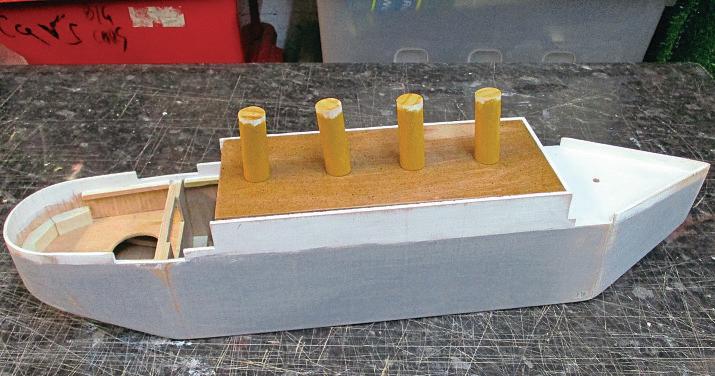
Construction was simple, working exclusively with 4mm ply) and involved a flat base, three internal bulkheads to support the sides, a flat cut up at the rear to give space for the rudder and prop, and a similar cut up at the bow (see Build Photo 1). Two pieces of ply were cut and stuck at the bow (see Build Photo 2), while an internal ‘shelf ’ support created a former for the curved stern, which was made by glueing strips of ply vertically around this and the base sheet with PVA (see Build Photos 3 and 4).
The Titanic had a central superstructure block and raised bulwarks front and rear, so the side hull panels of the Mintanic reflect
this. Only the front deck was glued in place. The superstructure had fixed front and rear panels, with internal horizontal strips to support the removable roof section and stern deck, a fortuitous move for reasons that will be revealed later on (see Build Photo 5). Access to the interior would therefore be via the removable top and stern deck. Running gear comprised a 540 motor, specification unknown, coupled to a 100mm prop shaft and 30mm brass prop, together with a homemade brass rudder (see Build Photos 6 and 7). These were all bits scavenged from my spares box; I would have liked to use a 385 can motor, but I worked with what I had.

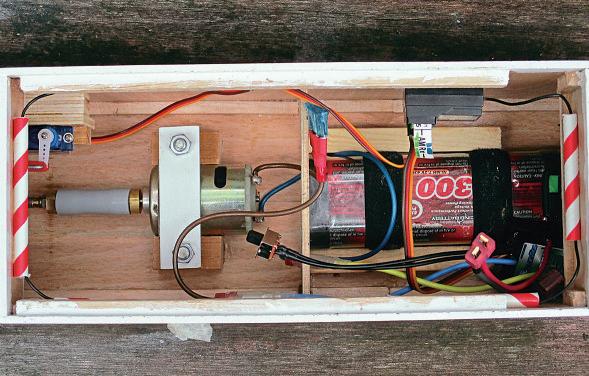
I sealed the hull with acrylic Eze-Kote resin and painted the outside with Rustin’s acrylic grey primer To date the only modifications have been to put a small bulkhead extension dividing the stern from the body to stop slopped water running into the hull, as there’s no vertical bulkhead to seal the stern from the main body, and now and then water gets splashed on deck and seeps inside.
Making the hull was easy Getting such a stubby, ill-shaped hull to look even vaguely like the Titanic, well, that proved a bit more of a cha l l e n g e H a r k i n g b a c k t o m y o r i g i n a l s t a t e m e n t , w h a t d o w e n e e d a s i d e n t i f y i n g f e a t u re s f o r t h e s h i p ? C o l o u r i s i m p o r t a n t : b u ff f u n n e l s , b l a c k h u l l , w h i t e s u p e r s t r u c t u re a n d w h i t e r a i s e d c a b i n s e c t i o n s f ro n t a n d re a r o n t h e h u l l s i d e s N e x t , w e n e e d a c e n t r a l
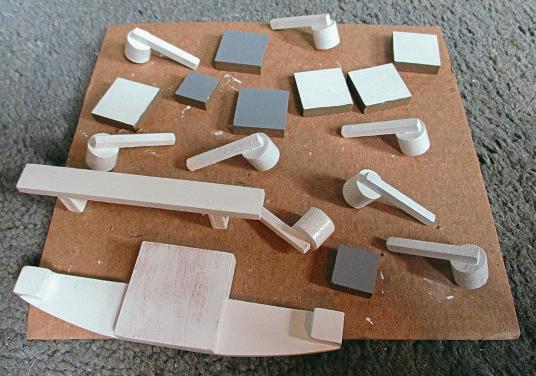
“Sometimes, less really is more ”
s u p e r s t r u c t u re b l o c k , t h e a l l - i m p o r t a n t f o u r f u n n e l s , t w o m a s t s , a n i n s u ff i c i e n t n u m b e r o f l i f e b o a t s g ro u p e d f o u r a n d f o u r o n t h e t o p , a n d c r a n e s f ro n t a n d re a r t o l o a d c a rg o – a s i t s h o u l d b e re m e m b e re d t h a t t h e s h i p w a s d e s i g n a t e d t h e t i t l e o f R M S T i t a n i c , R M S s t a n d i n g f o r R o y a l M a i l S t e a m e r
Sometimes, less really is more. Trying to make spectacularly accurate and detailed replicas of cranes, etc, is not warranted here. Good outline items are all that’s needed, starting with the funnels, as the most identifiable feature of the ship. As I was not building to scale, several funnel dimensions were tried before settling on the final size and design. I say ‘design’, although in truth these were simply bits of wood dowel with ‘steam vent’ pipes (cocktail sticks) glued on front and
rear Similarly, tapered bamboo dowel was used for the masts, MDF was cut and sanded for lifeboats, garden wire was bent around a former (oval electrical trunking) for the davits and dowel/ply sufficed for the cranes (some very basics bits and bobs used can be seen in Build Photo 8).
Satin black paint did for the sides, while household white paint and artists’ yellow ochre finished everything else off, barring the use of a custom light brown acrylic mix for the deck and a gloss red for the underwater section.
Next, let’s talk portholes: I am not necessarily happy with the 6mm sticky black paper dots I used to portray these. I would have preferred to have something slightly smaller, but with times being what they were I couldn’t lay my hands on anything
 Ashley’s 1200mm long semi-scale Titanic, with Mintanic to fore.
Ashley’s 1200mm long semi-scale Titanic, with Mintanic to fore.